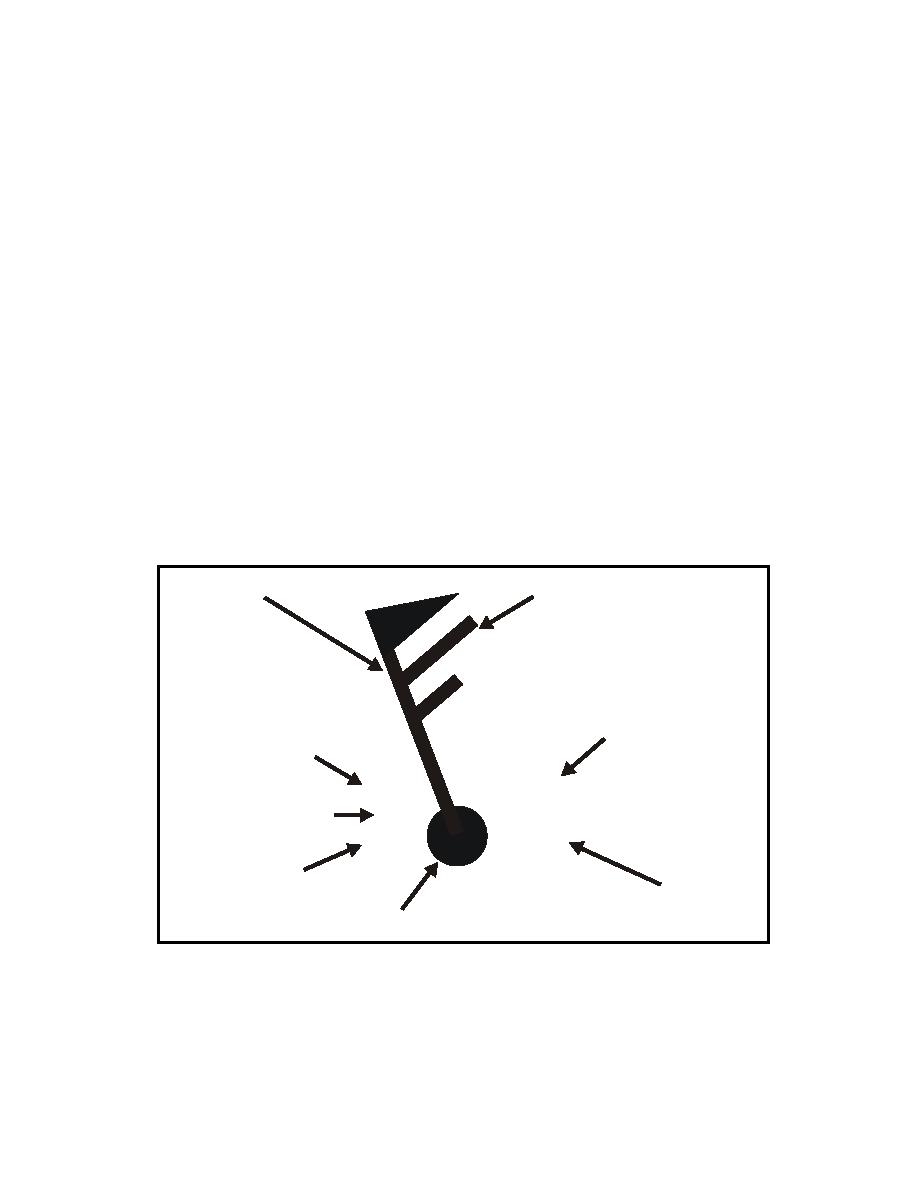 |
|||
|
|
|||
|
|
|||
| ||||||||||
|
|  strong crosswind can be dangerous, to say the least. Additionally, the circulation of air brings
about changes in weather by transporting water vapor. Therefore, wind plays an important role
in the formation of fog, clouds, and precipitation.
So how does one determine the wind direction? Wind direction is always expressed in terms of
the direction from which it is blowing. This convention holds throughout the world-- civilian or
military, weather or navigation, aviation or sailing -- wind always blows from a particular
direction. Thus, it would be best for a student to master this particular concept as early as
possible in a career where wind is an everyday concern.
There are many different ways weather phenomenon, such as wind, are annotated on charts or in
print. One of these methods is the use of a station model.
205.
STATION MODELS
Some weather charts display the information gathered from individual weather stations through
the use of the station model, shown in Figure 2-1. This model begins with a circle (or a square
for automated stations) at the center to represent the location of the station that issued the
weather report. Around the station symbol, data describing wind, temperatures, weather, and
pressures are displayed in a pictorial shorthand (Figure 2-2) to provide the maximum amount of
data in a minimum of space.
Wind Speed: 65 kts
Wind Direction: 330
Sea Level Pressure: 1014.7 mb
Temperature
34
147
Present Weather
*
32
+28 /
Dew Point
Pressure Change (3 hrs)
Sky Cover
Figure 2-1 Station Model Explanation
Another noticeable feature of the station model is a line coming out of the circle indicating the
wind direction. Since the station models are aligned for ease of reading, north is at the top of the
|
|
Privacy Statement - Press Release - Copyright Information. - Contact Us |